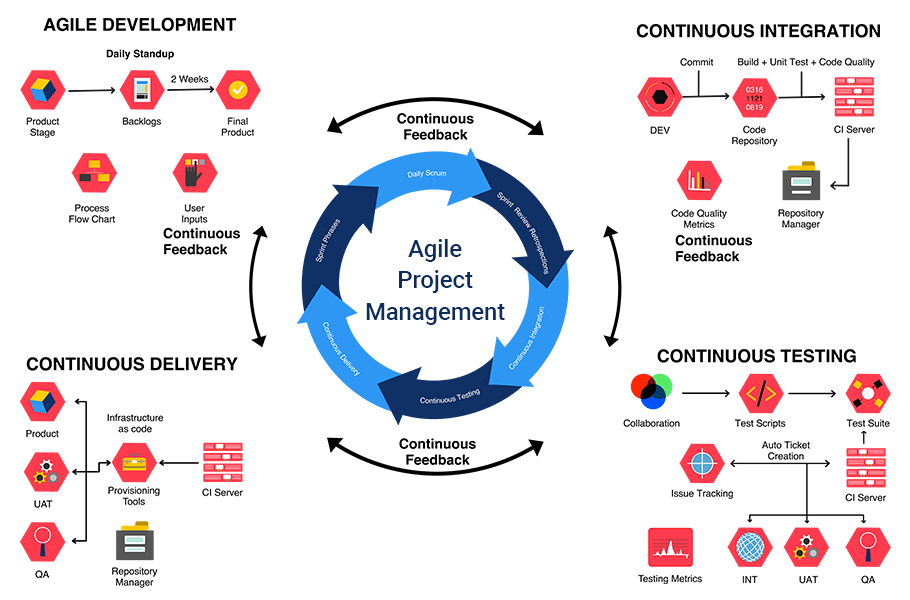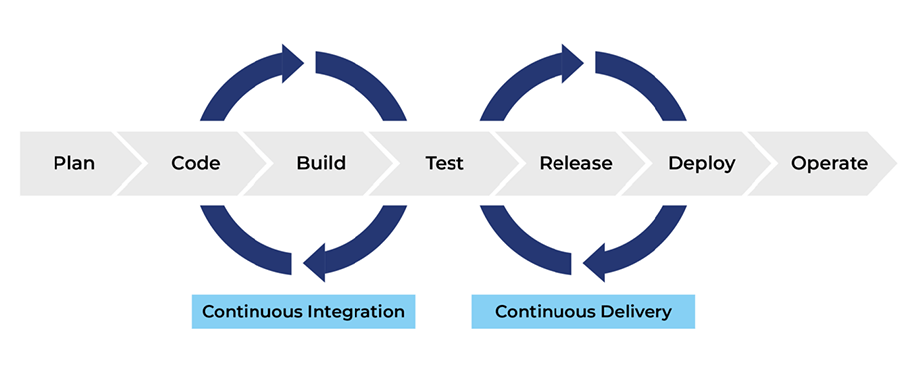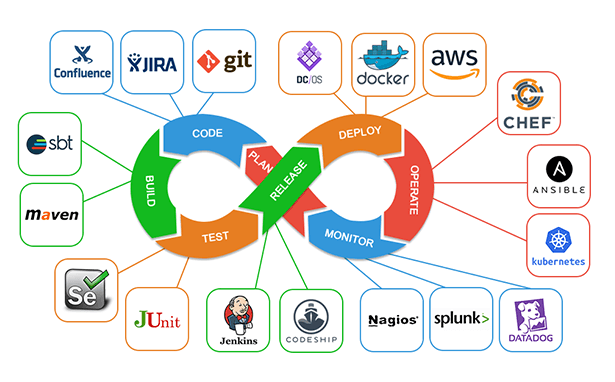
As developers are stimulated to write as well as release more codes, operations engineers can expect to prevent the errors as well as deployment of the bug-packed software. Therefore, the operation teams usually work as doorkeepers and can significantly slow the deployment procedure.
This issue can be solved by using best practices to improve association and encourage teamwork among operations, development and QA teams. DevOps allows all these people to own the entire software development cycle. Therefore, there is no need for a gatekeeper.
The advantages of adopting the DevOps best practices and tools include:
- A streamlined software development procedure
- Better productivity
- Increased compliance and security
- Quicker deployment of the latest product features
- Smaller timespan to market
While the advantages of the DevOps method are huge, DevOps approach can be hard to implement. This blog outlines DevOps best practices that you need to follow for optimizing development procedures.
DevOps Build Best Practices to Follow in 2022
Building a Combined Culture
DevOps’ key concept is to improve collaboration and eliminate silos among operations, development, and QA teams. This is how software can be developed and shipped faster to clients. This collaboration level requires cultural changes and mindset changes within the engineering team, with a consistent objective or collection.

Both developers and operations
engineers must take full ownership of the software development process and work together to meet customers’ expectations. DevOps makes operations and development part of everyone’s responsibilities, regardless of their roles within a team.
Giving Preference to Customer Satisfaction
If you’re utilizing the standard waterfall pattern or a complete DevOps method, the objective is to fulfill client’s expectations.

For instance, a few of the topmost expectations of contemporary SaaS clients are continuous updates as well as quick delivery of newer functionalities. DevOps provides you with the capability of streamlining the release procedure. As the similar people manage code release and write new codes, it’s easy to push newer functionalities out to customers quicker.
Using Agile Project Management

Agile is the inventive project management approach, which assists software engineering groups in executing high-quality projects quickly. The four key ideologies of agile project management include:
o Customer relationship over contract intercession
o Interactions and individuals over tools and procedures
o Reacting to alteration over pursuing a plan
o Working software over all-inclusive documentation
In short, the agile methodology allows solutions and requirements to grow as you collect customers’ feedback; this also gives your team the capability to adapt as well as react to the changes.
Adopting Continuous Integration (CI) and Continuous Delivery (CD)
CI (Continuous Integration) is the core DevOps’ finest practice, which is utilized to integrate code alterations from various contributors to a fundamental repository. CI helps developers in merging code changes regularly and utilizes automated tools for testing the code’s accuracy.

CI is accomplished using the source code control method. The key element of CI is that it’s easy to find quality issues and errors in lesser amounts of codes than on the larger codebase written during the extended period.
Monitoring the Right Metrics
The best practice of DevOps is Continuous Performance Monitoring. The efficiency of the DevOps approach could only get measured by following the ideal performance metrics like mean time, lead time, and problem severity.

Monitoring all the metrics is very
important as it helps you identify
when things have gone wrong and
you can improve them rapidly.
DevOps metrics rely on the
organization’s objectives and expectations. A few metrics like unit costs, are helpful to all engineering teams as they are related to profitability.
Using the Correct Tools
Automation is the core of any effective DevOps practice. DevOps best practices for automation for constructing, testing, as well as releasing of software makes the life easier for operations engineers and developers, who cooperate in the DevOps organization.

You’ll require access to best practices for DevOps as well as tools to help to achieve this, no matter whether it’s a tool that tracks performance metrics, provides warnings when something isn’t in order or gives you an overall overview of the progress of your software.
Using GTCSYS to Improve the DevOps Development
In the end, the objective of a software team is to create profitable software, which meets all the customer requirements. Cost is a very important characteristic of any development procedure as it affects many features any team could support as well as the pricing at which all these structures are provided to customers.GTCSYS helps your team get the cost insights that allow you to control your cloud costing as well as make well-versed decisions in these trade-off types.Ask for a demo today to know how GTCSYS’s cost intelligence service will help you create more cost-effective software using DevOps industry best practices.

